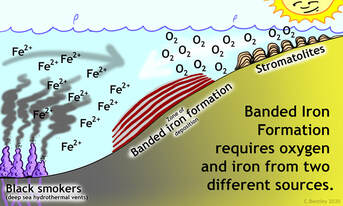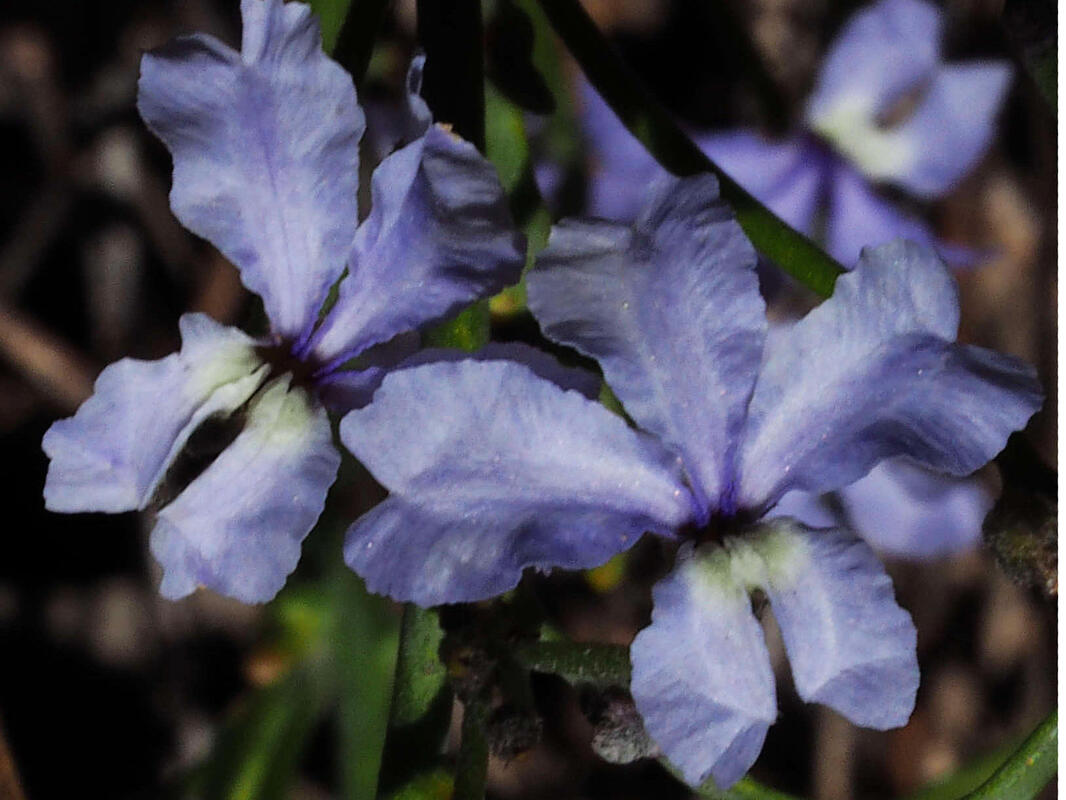 image from opengeology.org
image from opengeology.org I was blown away to find an outcrop of banded ironstone on a gravel ridge on the Banksia Walk. It is only a small outcrop but was a great surprise because banded ironstones are ancient deep-water sediments that are much older than the underlying granites in the district.
I consulted my geologist colleague Jefferson Harris who was equally blown away but offered the following amazing explanation. It is a long story that involves cataclysmic events over billions of years.
The story starts somewhere around three billion (3000,000,000) years ago when there were ‘islands’ of continental rock in a world-wide ocean. At this time there was little oxygen in the atmosphere or the water that contained dissolved iron and other minerals coming from ocean vents.
In deep still-water basins around the islands, silica (an often-tinted type of quartz) was slowly deposited. Life at this time included early stromatolites (like those in Shark Bay) that gradually released oxygen.
When this oxygen reached a certain level, it combined with dissolved iron that settled out as a dark iron-rich layer on the sea floor. The oxygen depleted water then accumulated more dissolved iron.
As oxygen content of the water fluctuated, alternating quartz and iron-rich sediments accumulated as thick layers that became banded ironstone formations in areas like the Hammersley Ranges.
As the islands and their associated deposits collided, the edge of one was forced under the other in a process called subduction. The sinking edge melted as it continued down into the very hot underlying mantle of the earth. This created huge molten blobs of granite that rose through the mantle until it met overlying cooler rock. (which in this case contained banded ironstone).
As the molten granite continued upwards its heat caused the overlying rock to crack and sink down into the lighter granite and be incorporated into it.
The island underlying Narrogin (the Boddington terrane) joined others to form by a huge stable slab of continental granite-type rock called the Yilgarn Craton that underlies most of the agricultural area and goldfields. This has remained relatively stable, and the exposed rocks slowly weathered to soil that was washed into the ocean. The land surface of the Narrogin area became lower until granite containing embedded banded ironstone was exposed on the surface
A mere hundred million years ago the proteaceae family developed the ability to extract phosphorus from poor soils that led to the formation of lateritic soil from soils derived from weathered granite.
To simplify a long story, we now have banded ironstone embedded in laterite!










